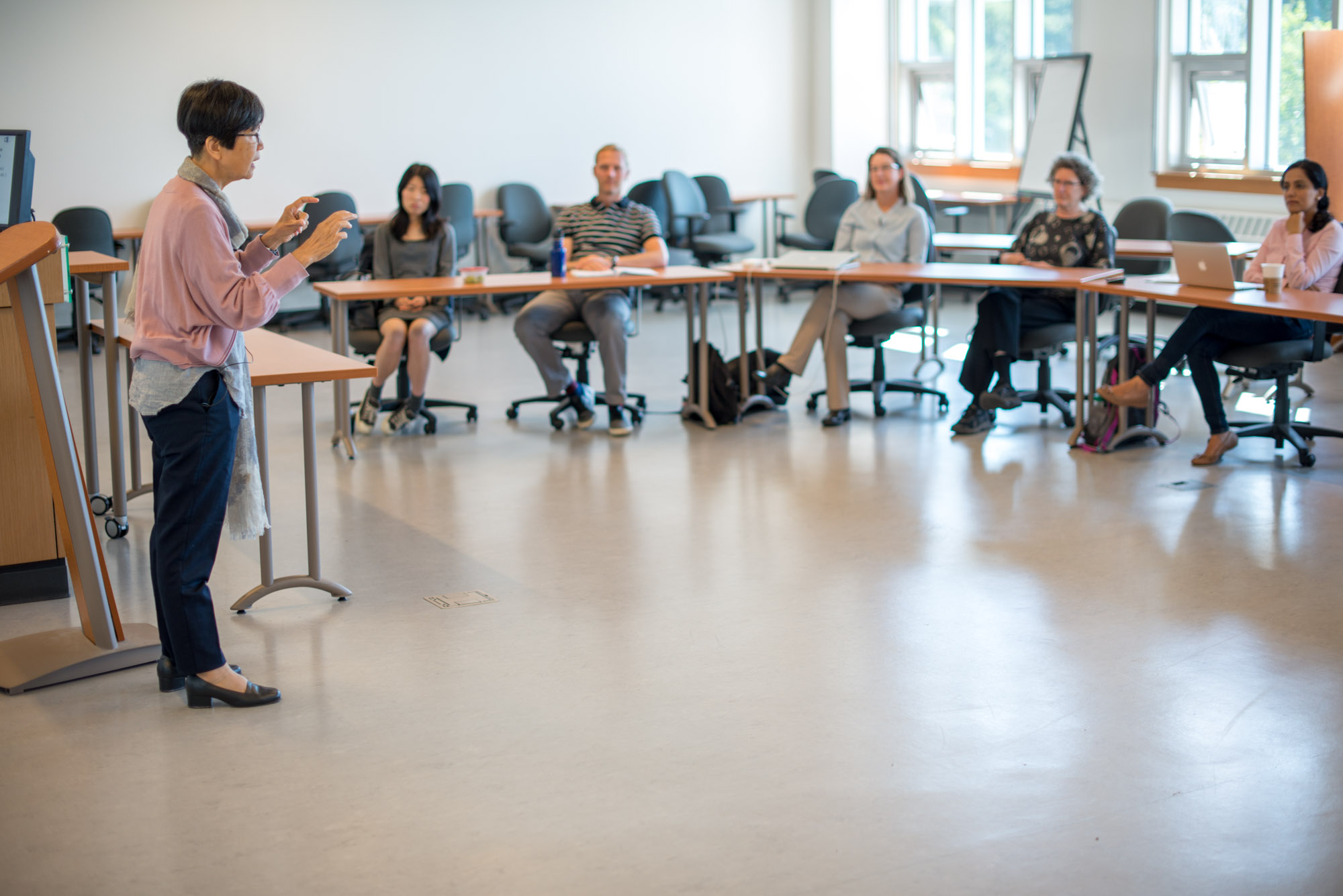Unit 2: Face-to-Face Teaching
Unit 2: Face-to-Face Teaching

As you think about teaching you may find this short article interesting: Advice from Students, by Tena Long Golding, PhD.
Classroom set-up
- Work with the Program Staff to ensure logistics – that your room is available and set up the way you want it to be.
- Test out the technology (console) prior to Day 1 (Media Support Services can help).
The first day of class
Here are some questions you may find helpful to consider before your first class:- How will you introduce yourself? (experience, interests, passion, why you are excited by this topic)
- Will you use some sort of ice-breaker? Consider that these students may already know each other from previous classes and it is you who needs to get to know them.
- How will you introduce the course? (key topics, assignments, dates, etc.) This need not be a lecture. It could be just a brief overview and then turn it into an interactive session.
- What do your students already know about the course topics?
- Besides class-time, how will you communicate or interact with your students? (office hours, contact information, tutorials, etc.)
- How can you learn students' names? (see Getting Names Right: It’s Personal, by Nichole Igwe in Faculty Focus Oct 2016)
Further reading:
- The First Day of Class: A Once-a-Semester Opportunity - from Teaching Professor Blog, By: Maryellen Weimer, PhD and a follow-up suggesting several specific activities: First Day of Class Activities that Create a Climate for Learning
Communicating/Interacting with Students Outside of Class
- Establish and maintain “office hours” aligned with your program’s expectations. It may be that you arrive 30-60 minutes before class or stay after class to meet with students. You might conduct 1-on-1 meetings with students via phone or Skype.
- How should students contact you? (Students often have questions about assignments or want to let you know about a particular problem or circumstance they are facing.) You might want students to communicate with you through RRU email or through a Moodle forum. Check with your program but in most cases the expectation is that an instructor will respond within 24 hours. You may offer your phone number (home office?), just consider your schedule and what will work best.
- Perhaps you'd like to walk to Habitat (our on campus cafe) and have a coffee or lunch with a few students.
- Some instructors plan an evening or weekend optional tutorial or extended conversation on topics of interest. Again, check with your program office for guidance.
- You may use the News Forum in Moodle to broadcast a message to your students. When you do this, an email is sent to each student and the message is stored in the forum for future reference.
- A Simple Invitation: Please See Me! - from Faculty Focus, October 2016, by Micah Sadigh
How not to lecture
Many of us remember our university days and have a picture of teaching as lecturing,... but think again. Very few instructors are skilled orators who can capture and hold students’ attention for more than 10-20 minutes. AND just because you talked for 20 minutes does not mean the students understood what you told them. There are several techniques you can use to disrupt the lecture and help students process information and concepts. See Using Moodle and other technologies or contact CTET Studio for some great ideas!
Establishing routines so that students know what to expect is a good strategy, and part of that routine can include activities that engage students with course concepts and with each other. Usually these activities are thoughtfully written into the lesson plans. Some common activities are ‘think-pair-shares’, small group discussions, debates, and mock interviews, but there are scores of others to consider.
Think about letting your students create and contribute to some of the content; after all, they come to the class with experience. Talk to your CTET Instructional Designer or CTET Studio, and check out the links below for more ideas.
- Five Characteristics of Learner Centered Teaching from QED blog
- Active learning activities - Centre for Teaching Excellence, University of Waterloo
- Interactive Classroom Activities - from the Sheridan Center, Brown University
- How Do Students Learn from Participation in Class Discussion?, from Faculty Focus
- The Eight-Minute Lecture Keeps Students Engaged - by Illysa Izenberg, Faculty Focus
- Nine alternatives to lecturing - from The Centre for Teaching Excellence, University of Waterloo
- Tips for Engaging Students in Learning: Alternatives to Lecture - adapted by McGill University from www.collegesuccess1.com